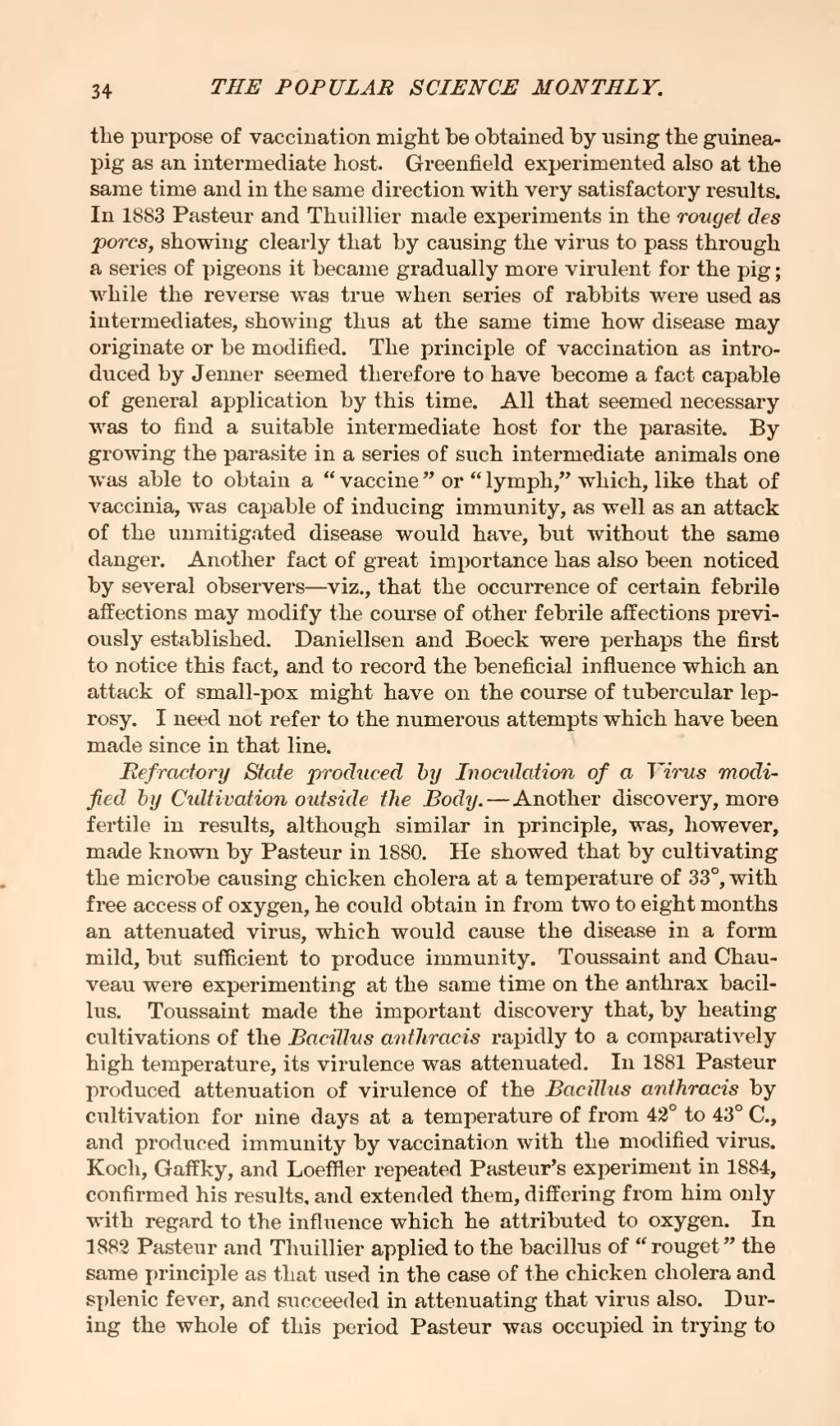the purpose of vaccination might be obtained by using the guinea-pig as an intermediate host. Greenfield experimented also at the same time and in the same direction with very satisfactory results. In 1883 Pasteur and Thuillier made experiments in the rouget des pores, showing clearly that by causing the virus to pass through a series of pigeons it became gradually more virulent for the pig; while the reverse was true when series of rabbits were used as intermediates, showing thus at the same time how disease may originate or be modified. The principle of vaccination as introduced by Jenner seemed therefore to have become a fact capable of general application by this time. All that seemed necessary was to find a suitable intermediate host for the parasite. By growing the parasite in a series of such intermediate animals one was able to obtain a "vaccine" or "lymph" which, like that of vaccinia, was capable of inducing immunity, as well as an attack of the unmitigated disease would have, but without the same danger. Another fact of great importance has also been noticed by several observers—viz., that the occurrence of certain febrile affections may modify the course of other febrile affections previously established. Daniellsen and Boeck were perhaps the first to notice this fact, and to record the beneficial influence which an attack of small-pox might have on the course of tubercular leprosy. I need not refer to the numerous attempts which have been made since in that line.
Refractory State produced by Inoculation of a Virus modified by Cultivation outside the Body.—Another discovery, more fertile in results, although similar in principle, was, however, made known by Pasteur in 1880. He showed that by cultivating the microbe causing chicken cholera at a temperature of 33°, with free access of oxygen, he could obtain in from two to eight months an attenuated virus, which would cause the disease in a form mild, but sufficient to produce immunity. Toussaint and Chauveau were experimenting at the same time on the anthrax bacillus. Toussaint made the important discovery that, by heating cultivations of the Bacillus anthracis rapidly to a comparatively high temperature, its virulence was attenuated. In 1881 Pasteur produced attenuation of virulence of the Bacillus anthracis by cultivation for nine days at a temperature of from 42° to 43° C, and produced immunity by vaccination with the modified virus. Koch, Gaffky, and Loeffler repeated Pasteur's experiment in 1884, confirmed his results, and extended them, differing from him only with regard to the influence which he attributed to oxygen. In 1882 Pasteur and Thuillier applied to the bacillus of "rouget" the same principle as that used in the case of the chicken cholera and splenic fever, and succeeded in attenuating that virus also. During the whole of this period Pasteur was occupied in trying to
